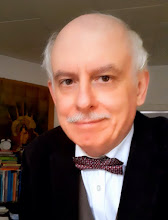In 'Ueber dramatische Kunst und Literatur' the early 19C German poet A.W. Schlegel describes the relationship between order and the underlying non-order which he calls 'the romantic imagination'. Schlegel, who was a strong influence on the early developments of romanticism in the arts, sensed something about nature and the human psyche, seeing in both the outer form of nature and human consciousness as floating on a layer of chaos. So, within the universe which appears to be ordered, a chaos lies concealed, striving after new births of order.
19C romanticism found 18C rationalism, of which the Enlightenment is the most important fruit, a bit on the dry side, and tried to compensate for it by pointing towards the irrational, the mysterious, the far-away or deeply-hidden, to the secret forces of nature and the unfathomable workings of fate, and the often un-ordered flows of human emotions. Related to the art of music, one could say that these undercurrents represent the expressive layer of a musical work, which is given form by a superstructure of order. This explains the intensity of much of Bach's music, which is so well-ordered on the surface, and the balance of freedom and order in Beethoven's works.

No comments:
Post a Comment